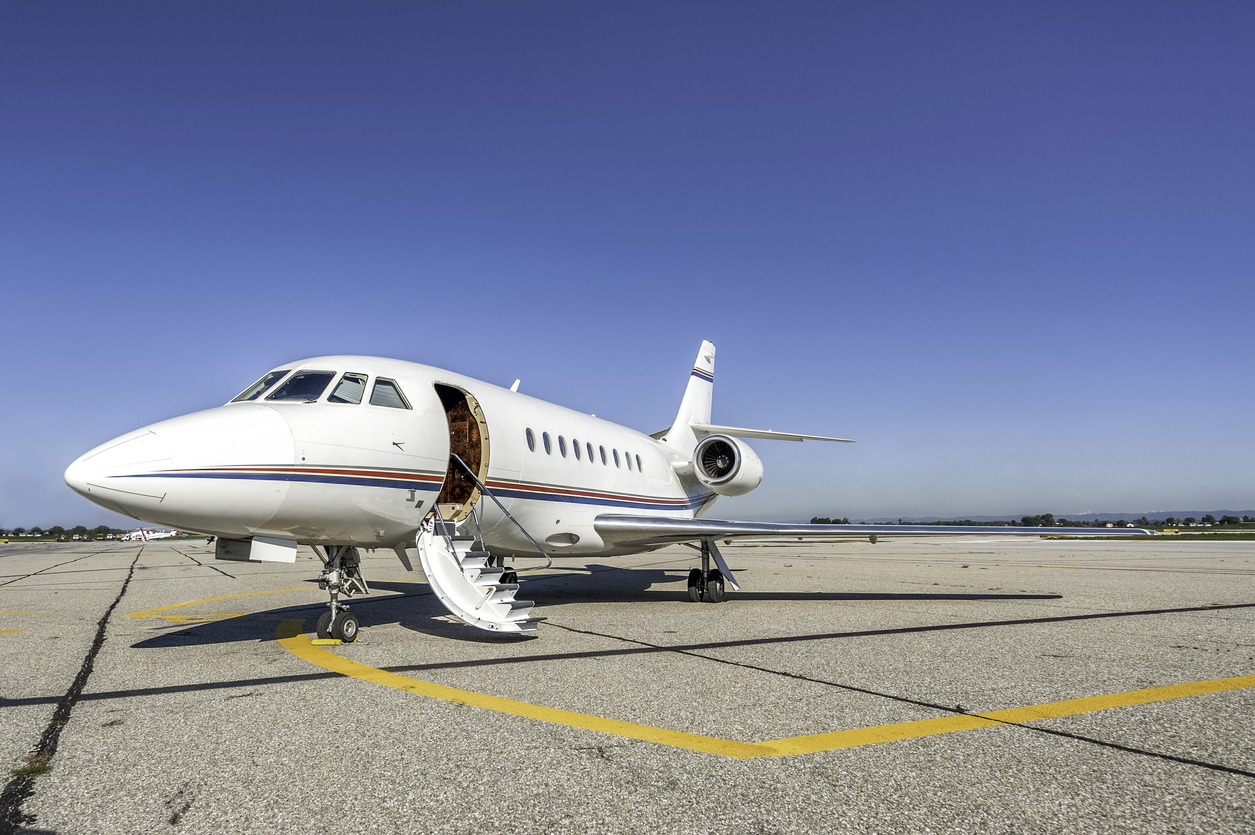10-30-2019 |
Aircraft Dry Lease Checklist
By: Brennan Block

There is no doubt about it: purchasing, owning, and operating an aircraft is an expensive endeavor. For this reason, we find our clients seeking out more cost effective private aircraft arrangements. Most often, an aircraft charter or lease arrangement more closely aligns with a client’s goals than outright aircraft ownership.
Chartered air travel is extensively regulated by the Federal Aviation Administration (the “FAA”) under Title 14 of the Code of Federal Regulations, Part 135 (14 C.F.R. Part 135). To maintain an active charter certificate, an aircraft operator must comply with regulations that require an extensive degree of aircraft maintenance, servicing, and operating procedures. For example, chartered aircraft are subject to certain airport runway length requirements and can only conduct instrument approaches into airports with onsite weather reporting facilities. Restrictions like these often make chartering the less preferred arrangement as compared to a dry lease.
A private aircraft “dry lease” arrangement is subject to fewer operating restrictions and governed by 14 C.F.R. Part 91. With a dry lease, an aircraft owner/lessor leases an aircraft to a lessee/operator without a crew. Neither the lessor nor the lessee is required to hold a charter certificate. In a dry lease situation, the lessee provides its own crew and exercises operational control of its flights. The lessee can operate the aircraft without complying with many of the more restrictive and costly requirements applicable to chartered service. Additionally, federal excise tax is generally not due on lease payments by the lessee to the lessor (although sales tax is often assessed on such payments), which is another advantage over chartered service. For these reasons and more, we often find clients desiring dry lease arrangements.
If you have done your research and determined that a dry lease makes the most sense for you, a written dry lease agreement should be drafted and executed. The following are key terms to be addressed in any aircraft dry lease:
- Identify Parties. Include the lessor and lessee’s legal name and address, as well as the place of organization of each party (assuming each party is an entity).
- Term/Exclusivity. Include the duration of the lease and whether the lease will be exclusive. If the lease will be non-exclusive, address: a) how often during the term of the lease the lessee will have the opportunity to lease the aircraft, and b) the procedures the lessee must follow to reserve the use of the aircraft.
- Delivery/Storage/Return. Where will the aircraft be delivered and returned? Are there any restrictions on where it may be stored? Are there any return conditions with which the aircraft must conform? With non-exclusive dry leases, the aircraft is typically returned to the lessor after each round-trip flight. If this is the case, the process for returning, inspecting, and passing off control of the aircraft should be laid out with specificity in the lease.
- Consideration. Identify whether the lease payments will be a fixed amount or on an hourly, per-use basis and whether any such payments will be due every month/quarter/year and by what day and time. Beware that a state sales tax will likely be assessed on all rent payments.
- Operational Control. It should be specified very clearly that the lessee has operational control of the aircraft during each of its flights, and that the lessee acknowledges and accepts its responsibility and the potential liability associated with exercising operational control.
- Expenses. Identify which party will be responsible for paying aircraft expenses, including but not limited to operating expenses (fuel, oil, landing fees) and aircraft storage, maintenance, and inspection expenses (but not necessarily including payment/hiring of crew members, which must be arranged and paid for by the lessee under a dry lease arrangement).
- Maintenance. Aside from paying for the maintenance, which party will be responsible for securing and directing required maintenance and inspections? The responsible party should be required to warrant that the aircraft will be kept in compliance with FAA regulations.
- Modifications. It should be identified which party will own any modifications to the leased aircraft (assuming the lease permits modifications, which is another topic that should be specified).
- Home Base. The home base of the aircraft should be identified. This is a primary factor used by the IRS in determining situs for state and local taxation purposes.
- Taxes and Fees. There are various taxes applicable to aircraft operations under a dry lease. While no federal excise tax on commercial air transportation should be imposed if the lease is structured properly, the parties should take care to research the applicability of, and specify who is responsible for bearing the burden of, other applicable taxes such as state sales tax (although the lessor is typically obligated by statute to collect and remit it), personal property tax, and state aircraft registration taxes.
- Representations and Warranties. If the lessor desires to make any representations or warranties regarding the condition or functioning of the aircraft, those should be stated plainly and definitely in the lease.
- Logbooks. It should be specified which party will be responsible for maintaining aircraft records, including logbooks and other records pertaining to the operation of the aircraft and its compliance with FAA regulations. The location where the logbooks are to be kept should be specified, as well as the right of each party to inspect the logbooks.
- Insurance. Specify which party will provide liability and physical damage (hull) insurance on the aircraft. State the amounts of insurance to be carried and which party will be responsible for paying any deductible, as applicable. The responsible party should be required to provide and maintain proof of its insurance coverage. Each party should be a named insured on the policy, and the policy should cover all uses of the aircraft by both lessor and lessee.
- Indemnification. Mutually agreed upon indemnification obligations (as permitted by state law) should be specified in the lease, as well any limitations of liability.
- Boiler Plate. Contractual provisions addressing governing law, amendments, assignments, subleases, lease interpretation, severability, force majeure, confidentiality, dispute resolution, and other similar miscellaneous concepts should be included in the lease.
Action Item:
If the Truth-in-Leasing Act provisions contained in 14 C.F.R. § 91.23 are applicable to the lease, the lease should include a Truth-in-Leasing clause, be mailed to the FAA within 24 hours after its execution, and be carried aboard the leased aircraft at all times. Parties should take extreme care in reviewing and complying with the Truth-In-Leasing Act as well as all other regulations applicable to aircraft dry lease arrangements.
If you have any questions or want to discuss a dry lease arrangement, please do not hesitate to reach out to Brennan Block at (brennan.block@brownWinick.com) or phone at (515) 242-2441.
This non-exhaustive checklist is for general informative purposes only and should not be construed or relied upon for tax or legal advice.

